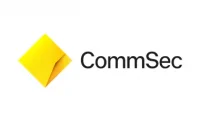Have you looked at your email replies lately?
I’m talking about the email messages that come back to your “reply-to” email address after you send an email campaign. Many are autoresponders, like out-of-office messages, but personal replies come in, too. These are the ones I mean.
You might have a reply-to handling system set up through your ESP to process those automatically, but maybe it’s time to rethink how you manage this process.
Table of Contents
Let’s start with change
I know everybody’s saying it, but I’m going to say it again because it’s true. The last 12 months have changed our behaviors – not just us marketers and our companies but also our customers.
Customers who never shopped online, or rarely did, found themselves banished to online solutions when their favorite stores closed in 2020.
I’m one of those people. I had never used Instacart or my local supermarket curbside pickup because I am the chef in my household, and I like to check out my vegetables myself before I buy them.
Today, I know my UPS, Amazon and Instacart drivers by their first names, which is more than I can say about some of my neighbors.
Back where we started in the 1990s
As we focus on how consumers are moving online to shop, we need to focus on another part of the story – how we’re repeating history.
Twenty years ago, our mission as marketers was teaching consumers how to shop online. We took our customers by the hand and showed them how to buy online. We were learning it ourselves, and teaching it at the same time.
We are back there again – we are teaching segments of our customer base how to shop and interact online. Now, we’re not just teaching the mechanics of opening and clicking on emails and browsing online – we are helping them expand their understanding of online possibilities.
Listening differently to customers today
This is where reply-to handling comes in. When Jeanne Jennings brought it up in a recent industry chat group, it got me thinking about this aspect of your email program that could help you learn more about your customers and connect with them in a new way.
Reply-to handling is an automated feature that manages the replies to your email campaign. Marketers usually set up this function to look for keywords in the email replies like “Unsubscribe,” or “Stop sending these emails,” “I hate you!” or “#$@$ %&*%#!” and then processes them as unsubscribes.
If you didn’t configure the settings in your email platform (many don’t), you might never have dealt with replies, but it’s worth checking to see how the system works for you.
You might not need to look at 95 out of the 100 email replies that come in after you send a campaign. But those remaining five can be unsubscribe requests or comments. Sometimes people reply with questions about the products in your email or ask for help with issues they’re having with your company.
Why? Because they may very well be new to shopping online.
This is why you should look at the replies people send you from your email campaigns: it helps you see what’s on your customers’ minds.
How to leverage reply-to handling
You shouldn’t try to handle all replies by yourself. Most marketers don’t have the bandwidth to sift through the sheer volume of replies. But we should study the messages that come back, looking both for personal replies and for indications about what our customers are trying to do with our emails.
Then we need to teach consumers that replying to our emails to unsubscribe or reach someone at your company will not solve their problems.
Let’s retrain our customer service groups on how to unsubscribe and process complaints that come through these personal replies to mass emails. This job of replying to emails from customers is what your Customer Service group does.
Further, your email group should have access to these insights. If you’re the person who sees the messages, spread what you learn from these emails to your team members.
I did this at several companies. What you will learn will be valuable for your marketing operations and strategy. Not the mean ones, but the emails where a person replied with “Thanks! You’re the best. Now I have a question.”
Advice for small teams without customer service groups
If you’re a one- or two-person email team and you send millions of emails every month, then sifting through email replies just isn’t feasible. You have enough going on. Just look at how your email platform manages the reply-to function.
But keep reading, because you might be a one-person email squad today, but you won’t always be a one-person team in a small organization.
How to use reply-to handling with customer service operations
If you have a medium or large email team, you probably have more capacity to monitor your reply-to email address and to be shared with your Customer Service people.
The logistics can seem daunting but are really rather easy. If you give control of the unsubscribe process to someone, you can just set up an internal web page that submits any email address and unsubscribes it.
The advantage of looking at replies is that your customers are replying to your email with their own emails. They assume that there’s someone on the other side of the screen, looking at their messages.
Your Customer Service group should be open to looking at replies, looking for ways the company can help people who replied with a personal question, comment or request, and how to monetize the process.
That’s the other advantage of personally replying to these emails. It can become a revenue stream because people will be writing back asking for help or more information, and your customer service rep’s personal answer can guide them to a purchase.
B2B emails need personal attention
On the B2B side, you should look at all replies, whether you’re in sales or marketing. Or, set up a shared inbox where sales and marketing people can see the emails.
In B2B, unless you work for a Salesforce-level sender, your volumes will be much lower. We have automated messages going out all the time, and we work strategically to make those messages as personal as possible, to make them look as if they’re coming from one person. But the end user doesn’t distinguish between automated and one-to-one emails. The value on the B2B side can be immense.
“No-reply” is not an option
However, one way NOT to manage replies is to use “no-reply” in your sender name (and here’s why no-reply is no-go for me). The proper strategy is to represent your brand in your sender name and email address and to add notes in the email instructing readers to click the unsubscribe link if they want off your list and telling customers how to reach you (phone numbers, contact forms, customer service email address and the like) or to set up an autoresponder with those instructions. “No-reply” is not what your brand is all about.
Wrapping up: Pay attention!
This isn’t a comprehensive guide to using reply-to handling. Your strategy for handling reply-to emails will depend on your company, your team size, your mailings, how often you send messages, and whether you have access to help from your customer service team.
Don’t feel bad if you have to use an all-automated handling process. But always look for opportunities to teach customers how to have meaningful interactions. If you truly offer no way to reply to customer messages sent to your reply-to address, take the steps I mentioned above to make sure they know what to do.
The customer’s ability to contact you directly for an individual dialog is what makes email work. You might think you’re sending a mass-market message to thousands or millions of subscribers. But your recipients think like my mom: “Costco sent ME an email,” not “Costco sent me and 9 million other people an email.”
Test my theory, marketers. Reply to a bunch of automated or campaign emails in your own inboxes. See what you get back. A personal reply? An autoresponder telling you how to unsubscribe or get a personal reply? Nothing?
Pay attention to the customer’s expectations of a personal relationship. Ignoring their replies is ignoring the opportunity for growth.
This story first appeared on MarTech Today.
The post How you handle email replies matters for great customer experiences appeared first on Marketing Land.


